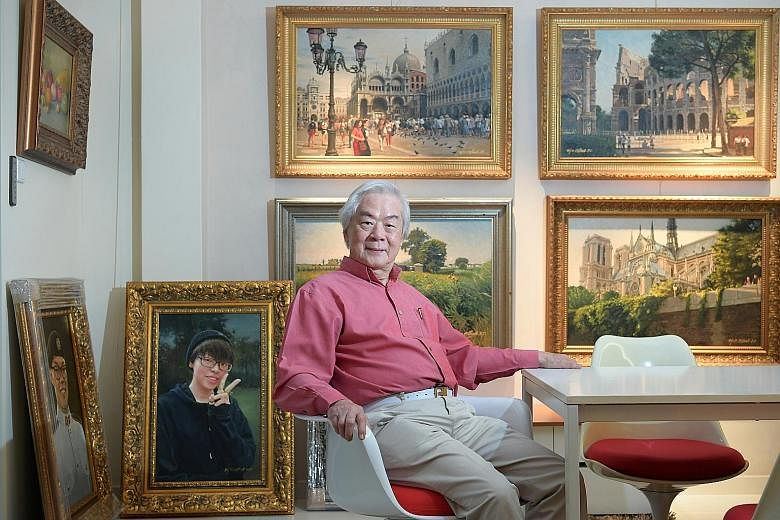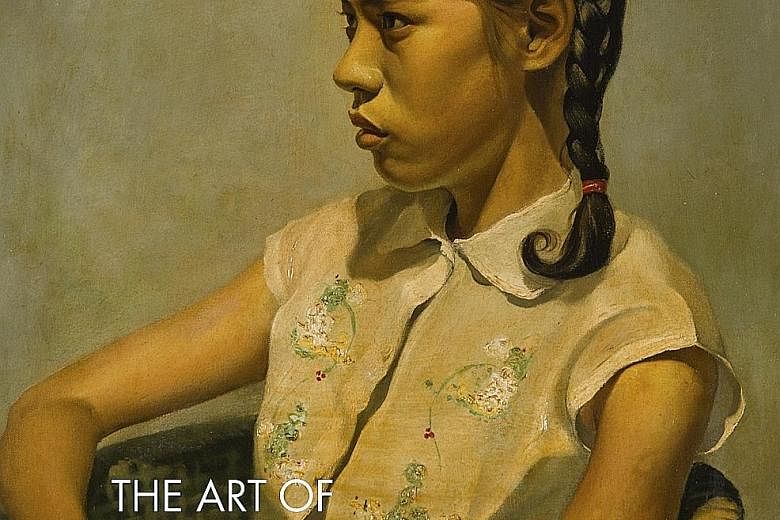He has painted presidents and pedestrians, chief justices and classrooms, some of the most iconic scenes of Singapore history and intimate portraits of his own family.
Now, for the first time, more than 300 works by Cultural Medallion recipient Chua Mia Tee will be gathered together in the pages of an art book, the most comprehensive on the 87-year-old's oeuvre to date.
The Art Of Chua Mia Tee: A Portrait Of A Life's Work will be launched today at National Gallery Singapore by President Halimah Yacob.
Chua, considered one of Singapore's foremost realist painters, is best known for nationally significant works such as Epic Poem Of Malaya (1955) and National Language Class (1959).
But he was also a prolific portraitist. He painted six Singapore presidents and got to know some of them well. Mr Ong Teng Cheong would have him over for a cup of coffee, while Mr S R Nathan would visit for lunch. His portrait of Singapore's first president Yusof Ishak appears on currency notes. He painted ministers, businessmen, academics and more.
"Painting people is the hardest," says Chua in Mandarin. He painted the broad workings of nation-building - Parliament in session, the rise of infrastructure in the cityscape - but also the people carried along in its currents: workers breaking for lunch in a canteen or vanishing trades such as the portable cinema of the 1970s.
"It's a good history lesson," says his daughter Dr Chua Yang, an obstetrician and gynaecologist. "His portraits are a who's who of Singapore's politics and economy, but he didn't just paint the rich and famous, he also painted the man on the street."
It took Dr Chua, 50, and a team five years to assemble the book. Many works were hard to gain access to as they were in the Istana or in private collections, some as far afield as Macau.
Chua himself had not seen most of these paintings for years, having only the photos he had taken on his camera, and later smartphone, to remember them by. "To see them all again, and in such high-quality images, makes me very happy," he says.
In a day and age when anyone can snap a photo on his phone, Chua maintains that the art of realism is still relevant. "Any one photo may have flaws. They don't always capture the gestures and the essence of the person."
When painting crowd pieces, such as his Parliament works, he would take multiple photos and sketches, then combine and distil them onto the canvas. His work, he says, must follow the three precepts of zhen, shan, mei (Mandarin for truth, goodness, beauty).
He was born in Shantou, China, and came to Singapore when he was six years old with his family, fleeing the second Sino-Japanese War.
After graduating from the Nanyang Academy of Fine Arts, he worked at an advertising agency and later as an illustrator before he was able to take up the brush full-time in 1974. In 2015, he received the Cultural Medallion, Singapore's highest artistic accolade.
Today, he no longer accepts portrait commissions or works the long hours he used to. "It's a lot of pressure," he says. "I want to paint what I like."
Palpable throughout the book is the presence of his late wife Lee Boon Ngan, who died last year. The couple, says their daughter, were inseparable for more than 65 years.
Lee was an accomplished artist known for her oil paintings of flowers. The book's cover features Chua's famous 1957 portrait of her as a schoolgirl. On its back is the only portrait he ever made of the two of them together, painted after she died and dated the day of her passing.
"We're very sad she never got to see the finished product (of the book)," says Dr Chua, as her father's eyes turn to this portrait, now displayed in the house off Dunearn Road where he and Lee lived.
Besides Dr Chua, they have a son, Professor Chua Hong, who is dean at the Technological and Higher Education Institute of Hong Kong, and two grandchildren. Their granddaughter Ernestine has followed in their footsteps as an artist. Lovingly rendered portraits of all of them appear in the book.
• The Art Of Chua Mia Tee: A Portrait Of A Life's Work ($69.55) will be available from Books Kinokuniya from next Saturday.



